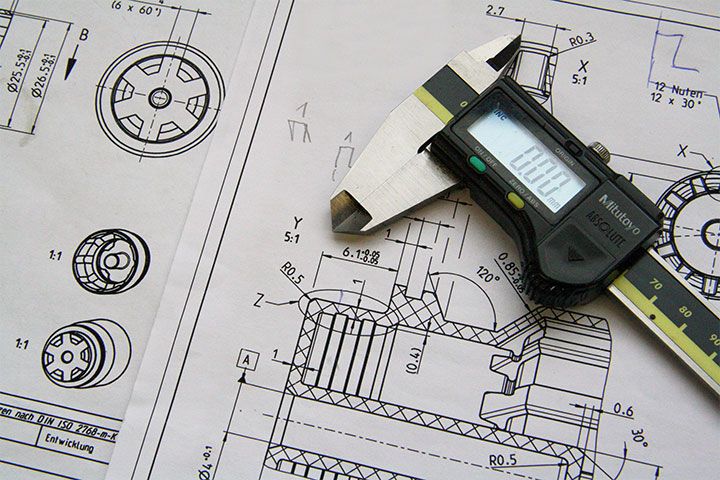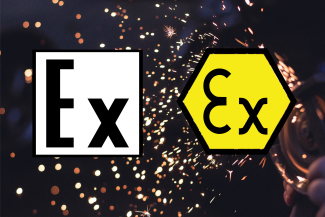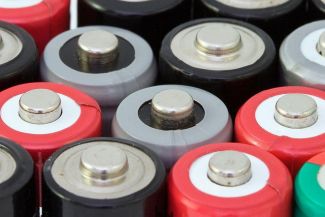
What is product certification and why is it needed?
Products sold on the Eurasian market (Armenia, Belarus, Kazakhstan, Kyrgyzstan, Russia) must be safe for consumers and the environment. In order to confirm the safety of products, there are a number of procedures to describe which in the commonly used sense the concept “certification” is usually used, although it is not entirely correct.
Let's try to figure out what it is, how it functions and who needs it and when.
First, you need to give the correct definition - the correct name for the procedure - “conformity assessment”. Moreover, this assessment can take different forms - EAC-Certification or EAC-Declaration of goods. More about the differences below.
It is important to understand that during the circulation of a product on the market - that is, from the moment the product is produced or imported into the Eurasian market, absolutely all participants in the process of selling the product are responsible for its compliance with safety requirements. That is, it doesn’t matter whether you produce, import, or sell products - you are responsible for its safety, in some cases, not only with money, but also with your own freedom.
Depending on the type of product, the process is regulated by Technical Regulations of the Eurasian Union, of which 52 have currently been adopted and a number more are at the stage of development, coordination and adoption at the level of the Eurasian Economic Union.
Technical Regulations determine mandatory requirements for products that ensure their safety for both the consumer and the environment. The requirements of Technical Regulations apply to a wide range of products, from underwear to high-speed trains.
Without EAC-Certificates or EAC-Declarations confirming the products’ compliance with the requirements of Technical Regulations, the import and sale of products throughout the entire Eurasian Economic Union, which includes five countries: Russia, Belarus, Kazakhstan, Armenia and Kyrgyzstan, is prohibited. That is, certificates and declarations of conformity of products with regulatory requirements are needed by manufacturers to release them into free circulation, importers of products to import them, and final sellers to sell them to consumers.
What forms of conformity assessment of goods exist?
Confirmation of product compliance with the requirements of Technical Regulations is carried out mainly in two forms: EAC-Declaration and EAC-Certification. For certain types of goods, such as medicines, chemicals or dietary supplements, there are additional forms of conformity assessment. In addition, some products, such as aircraft, nuclear power plants or weapons and ammunition, are not regulated within the Eurasian Economic Union and their requirements are determined by national or industry standards - which is a big but separate topic for discussion.
Products that are not included in any of the Technical Regulations are, as a rule, not subject to conformity assessment and can be sold without any certificates or declarations.
EAC-Certification of products is generally applied to products with a potentially high risk of use for consumers or the environment. For example, for underwear, children's furniture, electrical appliances for household use or explosion-proof equipment. The groups of these products are separately defined in Technical Regulations.
EAC-Declaration of products applies to all other groups of products specified in Technical Regulations.
What is the procedure for obtaining a certificate or declaration for a product?
The procedure for conformity assessment in the form of certification is carried out with the mandatory involvement of a third party - an accredited certification body.
Experts from the certification body, at the request of the manufacturer or importer of products, study technical documentation, i.e., the necessary technological documentation and documentation on the company’s quality management system, and carry out the necessary measures necessary to pass the conformity assessment procedure. These include: conducting an audit in production, during the audit process production processes are studied and the product quality management system is monitored; samples are selected for testing.
Samples selected for testing are sent to an accredited testing laboratory, where testing laboratory experts carry out the necessary tests using special equipment and enter their results into the test report. Based on the test results, audit results and verification of technical documentation, the experts of the certification body must decide whether the product meets the requirements for it and, accordingly, issue or not issue a certificate of conformity.
As is easy to see, product certification takes a lot of time and can be very expensive, so in a number of cases legislators decided to abandon it in favor of declaring conformity as a simpler procedure.
In the case of declaring conformity, the manufacturer himself collects evidence of product compliance with the requirements of the Technical Regulations, himself determines the scope of necessary tests and conducts tests either on his own equipment or in a third-party testing laboratory, he himself ensures and controls the quality management system at his company, without the need to involve a third party - the certification body and at the end issues a declaration of conformity, sealed with its own seal and signature. As a result, the costs of declaring conformity are significantly lower, but so is the level of confidence in the EAC-Declaration of conformity.
The form of conformity assessment is determined in the Technical Regulations, and if EAC-Certification is prescribed for a product, then a EAC-Declaration of conformity of the product for its release into circulation or sale will not be enough.
Issued EAC-Certificates and EAC-Declarations of conformity, together with the collected evidence, are entered into a public electronic register, and only after that they are considered valid. The validity of certificates and declarations is usually limited to five years.
It is important to understand that a certificate or declaration of conformity confirms only the fact that the product has passed the tests prescribed by Technical Regulations and must be safe when used properly. Certificates and declarations are neither proof of complete safety if used incorrectly, nor confirmation of the quality or authenticity of products.
How long does the conformity assessment process take and what is its cost?
This is a very common question and unfortunately there is no simple answer. Since very different products, from socks to high-speed trains, are subject to the conformity assessment, the procedure can cost from several thousand euros and take several working days, to many millions of euros and several years of work.
The final cost of certification is affected by the product type, the customer's preparedness, the sophistication of their technical and business processes, and the quality of their technical documentation. The complexity of certifying a well-documented manufacturer's product, where all components are certified and processes clearly outlined, differs significantly from certifying products of an importer who bought it on Alibaba, lacks direct manufacturer contact and detailed product understanding. These scenarios present distinctly different challenges in the certification process.
You can find out more about the costs of certification in our article "Costs of EAC certification and EAC declaration".
How to choose a certification body and what are the requirements for it?
Product certification is often associated with large financial and time costs, and can pose a serious risk for the manufacturer or importer. Despite the fact that large companies have extensive experience in this area, even they have serious difficulties, not to mention medium and small businesses.
Despite the fact that accredited certification bodies, testing laboratories and experts working in them are subject to very high requirements for competencies and the necessary equipment. Monitoring compliance with the requirements is entrusted to the Federal Accreditation Service (FSA). However, it can be stated that it is impossible to select a bona fide certification body or testing laboratory only on the basis of data available to the public.
The conformity assessment market continues to be dominated by companies that have established very unscrupulous business practices and operate highly opaque business structures. Continuing to issue certificates whenever possible without any verification of products for the purpose of their own enrichment. Which in recent years has led to a number of major scandals with the one-time revocation of thousands of issued certificates.
In the event that a certification body’s accreditation is revoked based on the results of an audit, this one-time makes all certificates issued by this body invalid, and such cases have occurred more than once.
Also, unscrupulous certification bodies can use so-called “paper laboratories”, that is, they do not actually have any equipment and are involved in falsifying testing protocols.
Even a conscientious customer who wanted to do all the work correctly and turned to a large company to get the work done can get into a situation with such certification bodies and testing laboratories. In addition, something like this can come to light at the most inopportune moment, and everything will have to be urgently redone and the product will be removed from sale. And if the circumstances are unfortunate, you can be subject to a large fine and confiscation of products.
For companies, it is crucial not only to comply with legal requirements but also to avoid common mistakes during preparation and implementation. Which points are particularly important in this regard can be found in our article “What to Consider in EAC Certification?”However, to reduce risks you should pay attention to the following:
- Registration in the national part of the register
- Recommendations from other clients in the same industry
- Transparent ownership structure
It is necessary to check the authenticity of the documents of both the certification body and the testing laboratory before concluding a contract and paying. It is desirable that contractual obligations for the work be concluded with the body directly, and not through an unknown gasket.
When a service contract is made through an intermediary firm and a certificate is withdrawn due to the fault of the certification body, it is often the case that there is no one to hold accountable or ask for explanations. This situation underscores the importance of direct dealings with the certification body to avoid such complications.
What to do if the product has not passed EAC-Certification?
Unfortunately, in some cases, a product may not receive a certificate of conformity, usually for several reasons:
- Incomplete or incorrect technical documentation
- Inability to prove the supply chain
- Lack or deficiencies in the quality management system identified as a result of the production audit
- Product has not been tested
To avoid such difficulties, you must, first of all, take a responsible approach to business processes in the company. The process of confirming a product's compliance with regulatory requirements should be viewed as an integral part of the broader product quality management system within a company. This approach begins with the thorough documentation of all technological processes, ensuring that compliance is embedded in every stage of production and management, rather than being treated as an isolated or standalone task.
It is also important, as part of ensuring product quality, to understand who your suppliers are and what they are selling you; if you do not know where you get the components and materials in your warehouse, what quality they are and where the documents are, then you will not pass certification accordingly.
It is also important to identify those responsible at the company for the implementation and provision of a quality management system, and these employees, starting with top management, must undergo the necessary training, and even better, the company must receive an ISO 9001 QMS certificate. Then there will be no difficulties when passing the audit.
In the same case, if the product does not pass the tests, there are several options:
Firstly, do not lose heart and change the production process and ensure that the product meets the requirements of Technical Regulations and conduct tests again. Secondly, take another look at the scope of application of these products, maybe these are not children's toys, but souvenir products and are not subject to conformity assessment at all? Thirdly, if nothing works out, abandon the production of this product. After all, just losing money is much better than killing or maiming people and going to jail by releasing obviously dangerous products with fake test reports.Responsibility for violation of requirements
Sales of products without documents confirming compliance or with forged or unreliable documents entail serious penalties in accordance with Chapter 14 of the Code of Administrative Offenses, providing for fines of up to a thousands euros, suspension of the companies’s activities, confiscation of products, and in case of harm to life, health or the environment, and criminal liability. You can find an overview of possible sanctions for violations of EAC certification rules in our specialist article. Therefore, it is important to take the conformity assessment process seriously.
Compliance with EU and US sanctions in the context of EAC Certification

In addition to the technical regulations of the Eurasian Economic Union (EAEU), European and international companies must also comply with the applicable sanctions of the European Union and the United States when undergoing EAC certification. These regulations particularly concern the export of certain goods, trade with listed individuals and entities, and the provision of technical services. Non-compliance may not only jeopardize business relationships but also entail civil and criminal liability.
The situation is especially critical for exports to Russia and Belarus. Due to the geopolitical situation, numerous embargoes and restrictive measures have been imposed since 2014, which can directly affect the conformity assessment process. For example, it is possible that conformity assessment bodies or business partners in the affected countries are listed on sanctions lists, making cooperation legally impermissible. Therefore, companies must carefully review not only the technical regulations but also the current EU and US sanctions lists.
Another risk arises if a shipment is blocked due to sanctions violations. Even a formally correct conformity assessment does not provide legal certainty in such cases. Therefore, close coordination between compliance departments, export control officers, and certification partners is essential to avoid legal conflicts and to secure the supply chains.
Companies that aim to successfully export their objects of conformity assessment (products) to Kazakhstan, Russia, or other EAEU Member States should not focus solely on compliance with technical regulations but also ensure comprehensive sanctions compliance. This includes reviewing the end-use of products and selecting appropriate authorized representatives and local partners.
Schmidt & Schmidt provides a legally compliant solution via Kazakhstan. As an EAEU Member State, Kazakhstan is authorized to issue EAC certificates and EAC declarations. Through our local offices, we ensure that all conformity assessment processes are carried out in compliance with European and US sanctions regulations while enabling our clients to access the EAEU market.
Detailed information on current developments can be found in our article: EAC Certification Amid EU and US Sanctions against Russia and Belarus.
Conclusions
It doesn’t matter whether you manufacture products, import them, or simply sell them in your own store or online through third-party services - you are responsible not only for the availability of documents confirming compliance (EAC-Certificates and EAC-Declarations), but also for this compliance itself.
It is necessary to approach the paperwork procedure extremely responsibly and not try to “cut corners”; this can result in both the seizure of the product itself and serious problems, including criminal liability.
Conformity assessment is not just a formal procedure, but a part of business processes, only if you monitor the availability and authenticity of documents from your suppliers at all stages, document production processes, you can ensure your own protection and be sure that you will not have any difficulties with conformity assessment.
It is necessary to approach the choice of contractor when preparing documentation with extreme caution; there are a huge number of unscrupulous players in the market. You should especially be wary of those who openly offer reduced prices, conduct an aggressive advertising campaign, or try to conclude contracts through dubious shell companies. Check all documents of accredited bodies and laboratories, read reviews.
Compliance with these conditions does not guarantee that everything will go according to plan, but it will significantly reduce risks.
Certification for Export to Russia, Kazakhstan, and EAEU
Certification and approval for the Eurasian market is a complex process that requires both in-depth knowledge of Eurasian standards and requirements, as well as experience in interacting with government institutions. We work exclusively with accredited certification bodies and organize the entire certification process directly.
What is an EAC Certification?
In our video, we explain what an EAC Certification is and how and where to certify or declare your products for the introduction on the EAEU market.
The EAC Certification and the EAC Declaration are complex procedures that attest your products the conformity with the technical regulations of the EAEU and require a lot of know-how. Schmidt & Schmidt will support you with the certification of your products for the EAEU market.





